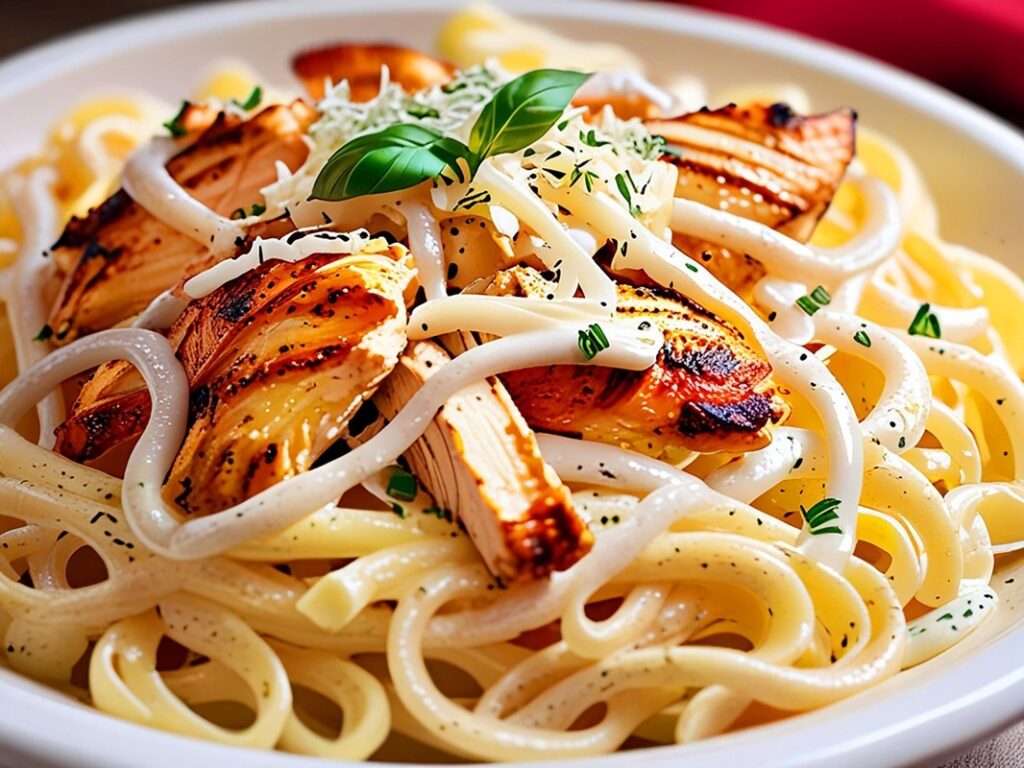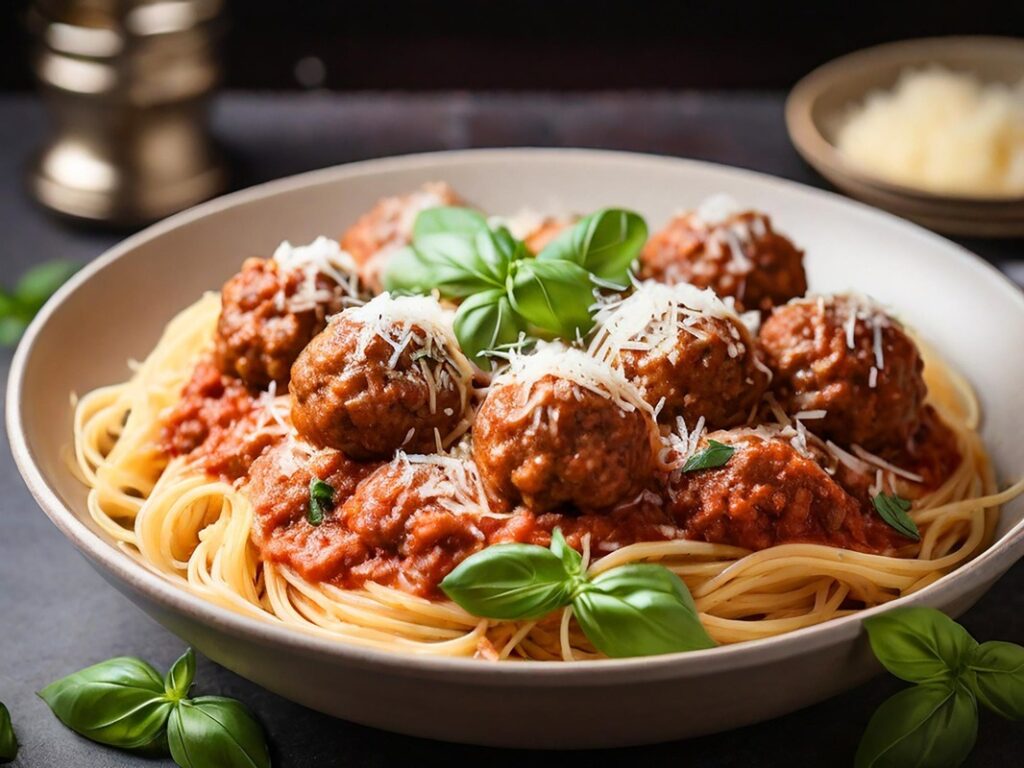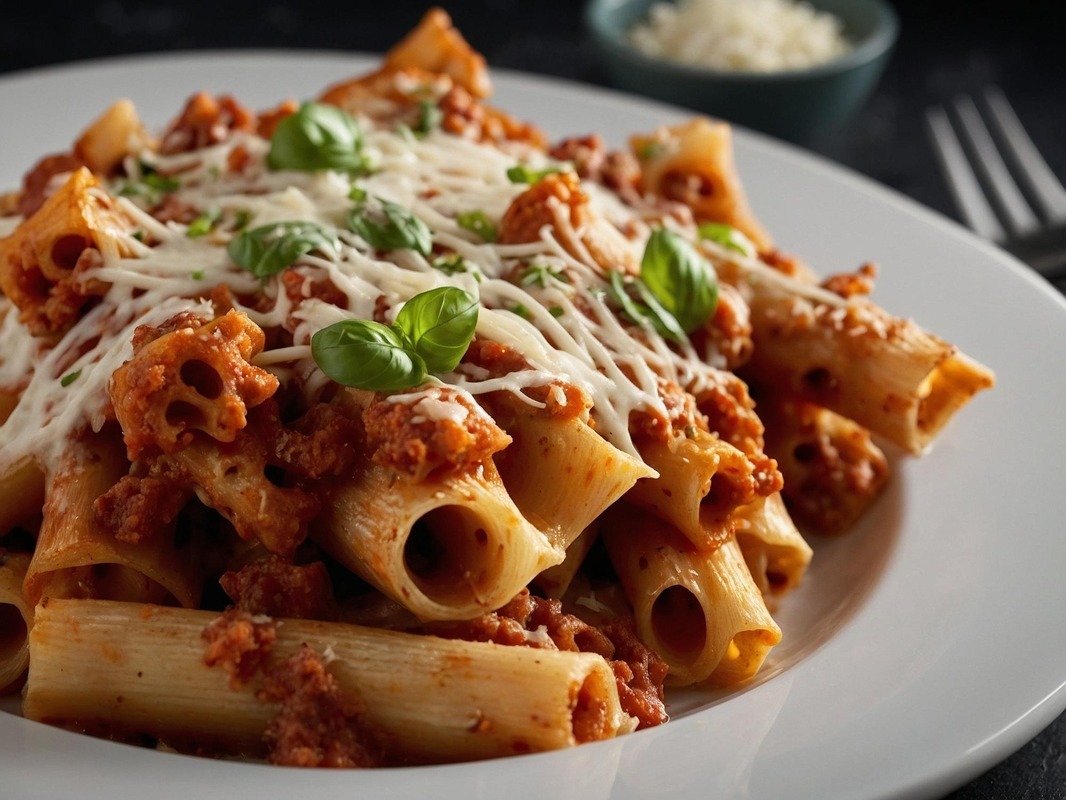Rotini pasta is a kitchen staple known for its spiral shape that holds onto sauces, making every bite flavorful and satisfying. Whether you’re preparing a quick weeknight dinner, a hearty family meal, or a dish for a special occasion, rotini pasta is the perfect choice. In this blog post, we’ll dive deep into everything you need to know about making the best rotini pasta—from the essential ingredients and step-by-step instructions to creative variations and expert tips that ensure your pasta dish turns out delicious every time.
Introduction: Why Rotini Pasta?
Rotini pasta is a beloved pasta shape that is versatile, simple to cook, and pairs beautifully with a wide range of sauces, vegetables, and proteins. Its spiral shape encapsulates sauces and seasonings, infusing each bite with a burst of flavor. Unlike some other pasta shapes, rotini is perfect for creamy, chunky, and even light sauces, making it a go-to choice for many home cooks.
You can customize this pasta dish in countless ways, making it more than just a base for sauces. Depending on your mood and the occasion, you can dress up or down rotini pasta with a classic marinara sauce, a rich Alfredo, or a zesty pesto. With this recipe, you’ll learn how to make a simple yet flavorful rotini pasta dish while also discovering various ways to take it up a notch.
Rotini Pasta’s History and Origins
Rotini, which means “twists” in Italian, is a type of corkscrew-shaped pasta that originated in Southern Italy. Traditional hand-rolled pasta shapes, created by rolling fresh pasta dough around a thin rod or knitting needle, inspired its design. The spiral shape was initially intended to trap chunky sauces, allowing each piece of pasta to be fully coated in the rich, flavorful mixtures.
Over the years, rotini has become a popular pasta choice worldwide, thanks to its versatility and ease of use. Italian homes and modern kitchens worldwide cherish rotini pasta for its adaptability to a variety of dishes, from salads and casseroles to baked pasta and hearty dinners.
Ingredients for Rotini Pasta: What You Need to Make
To create a delicious rotini pasta dish, you’ll need fresh, quality ingredients that enhance the flavor and texture of the final dish. Here’s what you’ll need:
Main Ingredients:
- Rotini Pasta (12 ounces): The star of the dish. You can use regular rotini, whole wheat rotini, or gluten-free options based on your dietary preferences.
- Use 2 tablespoons of olive oil to sauté the vegetables and prevent the pasta from sticking together after cooking.
- Garlic (3 cloves, minced): Garlic adds an aromatic depth and a burst of flavor that pairs beautifully with the other ingredients.
- Onion (1 large, finely chopped): The onions add sweetness and balance to the dish, forming the base of the sauté.
- Diced Tomatoes (1 can, 14.5 ounces): Diced tomatoes create the base for a light, flavorful sauce that coats the rotini perfectly.
- Tomato Paste (2 tablespoons): Tomato paste intensifies the sauce’s flavor, giving it a rich, hearty consistency.
- Italian Seasoning (1 teaspoon): A blend of dried oregano, basil, thyme, and rosemary brings an authentic Italian flavor to the dish.
- Red Pepper Flakes (¼ teaspoon, optional): For a little kick, red pepper flakes add a subtle heat that enhances the overall flavor.
- Spinach (2 cups, fresh or frozen): Spinach adds color, nutrition, and a slight earthiness to the dish, balancing the acidity of the tomatoes.
- Parmesan Cheese (½ cup, grated): Parmesan adds a savory, umami flavor and creaminess to the final dish.
- Salt and Pepper (to taste): Seasoning is key to balancing the flavors in the dish.
Optional ingredients and variations:
- Protein (chicken, sausage, shrimp): Add grilled chicken, Italian sausage, or sautéed shrimp for a heartier meal.
- Vegetables (bell peppers, zucchini, mushrooms): Incorporate more vegetables for added flavor, texture, and nutrients.
- Fresh Basil: Sprinkled on top, fresh basil adds a burst of brightness and freshness.
- Heavy Cream (¼ cup): For a richer sauce, stir in heavy cream to create a creamy tomato sauce.
Step-by-step instructions for making rotini pasta
Follow these detailed steps to create a delicious rotini pasta dish that’s perfect for any occasion.

1. Cook the rotini pasta:
Bring a large pot of salted water to a boil. Add the rotini pasta and cook according to the package instructions until al dente (typically 8-10 minutes). Drain the pasta, reserving ½ cup of pasta water, and set it aside. Drizzling a bit of olive oil over the drained pasta can prevent it from sticking together while you prepare the sauce.
2. Sauté the vegetables:
In a large skillet, heat the olive oil over medium heat. Add the chopped onion and cook for 5-7 minutes until soft and translucent. Stir in the minced garlic and cook for another 1-2 minutes until fragrant. Be careful not to burn the garlic, as it can turn bitter.
3. Combine the tomatoes and seasonings.
To the sautéed onions and garlic, add the diced tomatoes (with their juice), tomato paste, Italian seasoning, and red pepper flakes. Stir to combine all the ingredients. Let the mixture simmer for 10 minutes, allowing the flavors to meld together and the sauce to thicken slightly.
4. Stir in the spinach.
Stir in the spinach and cook until wilted (about 2–3 minutes if using fresh spinach). If you’re using frozen spinach, make sure to thaw and drain it before adding it to the skillet.
5. Combine the pasta and sauce.
Add the cooked rotini pasta to the skillet after incorporating the spinach into the sauce. Toss the pasta in the sauce until it’s evenly coated. If the sauce is too thick, add a splash of the reserved pasta water to achieve your desired consistency.
6. Add parmesan and adjust seasoning.
Stir in the grated Parmesan cheese until melted and fully incorporated into the sauce. Taste the dish, and adjust the seasoning with salt and pepper as needed.
7. Serve and garnish:
Transfer the pasta to serving bowls and garnish with additional Parmesan cheese, fresh basil, or a drizzle of olive oil. Serve the pasta as soon as it is warm and enjoy!
Serving Suggestions: What to Pair with Rotini Pasta
While rotini pasta can stand alone as a dish, it also works well with a variety of side dishes and accompaniments. Here are some ideas to round out your meal:

Side Dishes:
- Garlic Bread: Crispy, buttery garlic bread is perfect for mopping up any leftover sauce.
- Caesar Salad: A crisp Caesar salad with crunchy croutons and creamy dressing adds freshness and balances the richness of the pasta.
- Roasted Vegetables: A medley of roasted zucchini, bell peppers, and cherry tomatoes complements the flavors of the pasta.
Toppings and garnishes:
- Fresh Herbs: Sprinkle fresh basil, parsley, or oregano for a burst of freshness.
- Extra Parmesan Cheese: For extra richness and umami, sprinkle more Parmesan on top.
- Chili Flakes: For those who like a bit of heat, add a pinch of chili flakes.
Creative Variations of Rotini Pasta
One of the best things about rotini pasta is its adaptability. Whether you want to switch up the flavors or accommodate dietary preferences, here are some creative variations to try:
1. Creamy Pesto Rotini
Swap out the tomato sauce for a vibrant, fresh pesto sauce. Combine the cooked rotini with a homemade or store-bought pesto, then add a splash of cream for extra richness. Add some roasted cherry tomatoes or sautéed mushrooms to enhance the flavor and texture of the dish.
2. Baked rotini pasta casserole
For a comforting, baked version, prepare the rotini pasta as usual and mix it with a tomato-based or Alfredo sauce. Transfer the pasta to a baking dish, top with shredded mozzarella and Parmesan, and bake at 375°F (190°C) for 20-25 minutes until bubbly and golden brown.
3. Mediterranean Rotini Salad
For a lighter, cold pasta dish, combine cooked and cooled rotini with cherry tomatoes, cucumbers, Kalamata olives, red onions, and feta cheese. Toss the salad with a lemony vinaigrette and fresh herbs for a refreshing, Mediterranean-inspired dish that’s perfect for picnics and potlucks.
4. Rotini with Creamy Alfredo Sauce
Create a decadent Alfredo sauce by combining butter, heavy cream, and Parmesan cheese. Toss the rotini in the Alfredo sauce and add grilled chicken, sautéed spinach, and sun-dried tomatoes for a luxurious, restaurant-worthy meal.
5. Vegetarian Rotini Pasta Primavera
For a veggie-packed dish, sauté a mix of seasonal vegetables like zucchini, bell peppers, cherry tomatoes, and asparagus. Toss the rotini with the sautéed vegetables and a light garlic and olive oil sauce, then finish with a sprinkle of fresh basil and Parmesan.
Nutritional Insights: Is Rotini Pasta Healthy?
Rotini pasta can be a healthy part of a balanced diet, depending on the ingredients and preparation methods. Let’s look at the nutritional components:
Carbohydrates from Pasta
Pasta is a beneficial source of complex carbohydrates, which provide energy. Whole wheat or gluten-free rotini offers additional fiber, making it a better option for those looking to boost their dietary fiber intake.
Olive oil and Parmesan cheese fats
The healthy fats in olive oil contribute to heart health, while the fats in Parmesan cheese provide flavor and richness. To reduce fat content, you can opt for low-fat cheeses or reduce the amount used.
Protein from Additions
Adding protein sources like chicken, shrimp, or beans can turn rotini pasta into a complete meal that supports muscle growth and repair. Plant-based proteins like chickpeas or tofu are also excellent options for vegetarians.
Vegetables contain vitamins and minerals.
Incorporating vegetables like spinach, tomatoes, and bell peppers increases the vitamin and mineral content of the dish. These vegetables are rich in vitamins A and C, potassium, and antioxidants.
Rotini pasta can be part of a balanced meal when paired with lean proteins, healthy fats, and nutrient-dense vegetables. Portion control is key if you’re watching your calorie or carb intake.
The Importance of Cooking Rotini to Al Dente
Cooking pasta to the perfect al dente texture (meaning “to the tooth”) is crucial for the overall success of the dish. Al dente pasta is firm to the bite, holding its shape and texture even when mixed with sauces. Overcooked pasta can become mushy and lose its ability to hold onto sauces, resulting in a less enjoyable dish.
To achieve al dente rotini, check the pasta a minute or two before the recommended cooking time. It should be firm yet tender enough to chew. Immediately drain the pasta and, if not serving right away, toss it with a bit of olive oil to prevent sticking.
Expert Tips for Perfecting Rotini Pasta
Even with a simple recipe, there are a few tips and tricks that can elevate your rotini pasta dish:
1. Generously salt the pasta water.
Pasta water should be as salty as the sea. Salting the water is essential because it’s the only chance to season the pasta itself. This step guarantees that the pasta retains its flavor before combining with the sauce.
2. Don’t rinse the pasta after cooking.
Rinsing pasta washes away the surface starch that helps sauces cling to the pasta. Instead, drain the pasta and toss it directly into your sauce. If you need to cool the pasta for a salad, lightly coat it with olive oil.
3. Reserve some pasta water.
When it comes to achieving the perfect sauce consistency, pasta water is liquid gold. The starchy water helps emulsify sauces, making them silky and smooth. Add it slowly until your sauce reaches the desired texture.
4. For the last minute, cook the pasta in the sauce.
For the best flavor, toss the pasta in the sauce and cook it together for the last minute or two. This allows the pasta to absorb the sauce’s flavors, ensuring every bite is cohesive and delicious.
5. Don’t overload the pasta with sauce.
While it’s tempting to drown your pasta in sauce, a tasty pasta dish should have a balanced ratio of pasta to sauce. The sauce should coat the pasta, not overwhelm it. A lighter coating allows the pasta and sauce flavors to shine together.
Frequently Asked Questions (FAQs)
1. Can I make rotini pasta ahead of time?
Yes! You can cook the rotini pasta ahead of time and store it in the refrigerator for up to 3 days. Toss the cooked pasta with a bit of olive oil to prevent sticking. Reheat by tossing it in the sauce on the stovetop or by briefly microwaving it.
2. Can I Freeze Rotini Pasta?
You can freeze cooked rotini pasta, but it’s best to do so with the sauce. Store the pasta in an airtight container for up to 2 months. Thaw in the refrigerator overnight, then reheat in a skillet or saucepan with a bit of water or broth to refresh the texture.
3. What’s the best way to reheat leftovers?
The best way to reheat Rotini pasta is on the stovetop. Add a splash of water or broth to loosen the sauce and stir frequently until heated through. You can also reheat in the microwave, stirring halfway through to ensure even heating.
4. Can I use other pasta shapes in this recipe?
Absolutely! While rotini is perfect for holding onto sauces, you can substitute it with other short pasta shapes like penne, fusilli, or farfalle. Choose a shape that complements your chosen sauce and ingredients.
5. How Can I Make This Dish Gluten-Free?
Simply use gluten-free rotini pasta, which is widely available in stores. The sauce and other ingredients in this recipe are naturally gluten-free, making it simple to adapt.
Conclusion: A versatile dish for every occasion
Rotini pasta is more than just a staple pantry item—it’s a dish that brings people together with its comforting flavors and adaptability. Whether you’re whipping up a quick meal for a busy weeknight or preparing a hearty dish for a special occasion, rotini pasta offers endless possibilities for customization and creativity.
By following the tips and variations in this guide, you can master the art of making rotini pasta and create a dish that suits your tastes perfectly. So grab your ingredients, experiment with flavors, and enjoy the process of crafting a delicious, comforting meal.
